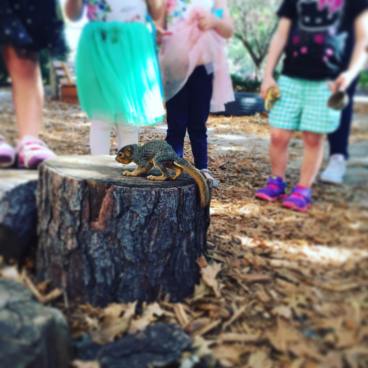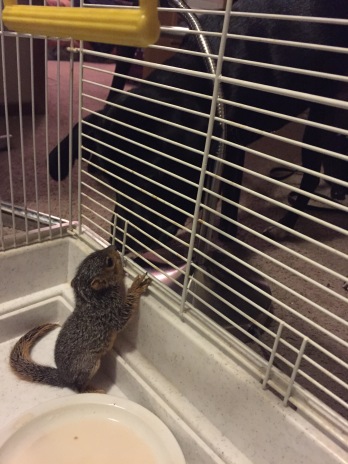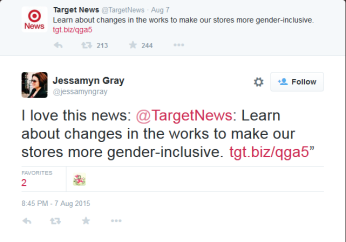students
Dear Students
Dear past, present and future students,
I am writing to all of you. I believe you deserve a leader who fights for your rights, rather than takes them away. I believe you deserve to live in a country where you do not fear the deportation or discrimination of yourself and your family members due to circumstances beyond your control. I believe you should have the opportunity to succeed in whatever venture you choose. I believe you should have the right to live the life you choose because you are an American. I believe you deserve the absolute best education possible. I believe you deserve high-quality, educated and professional teachers who know how to accommodate your specific educational needs.
Dear students I love you all. I not only care deeply about your education, but your lives and believe you deserve the absolute best. You are Americans and are told you are living in the greatest country in the world. But you are living in a country that is consistently failing you. You are living in a country where leaders care more about wall street, big banks and the wealthy than your well-being.
You deserve more than a leader who is a bigot and discriminates against most of you due to factors beyond your control. You deserve to have a leader who will fight for you no matter your race, sex, ability, income or background. You deserve a leader who doesn’t publicly insult more than half of the world. You deserve a leader who demonstrates love, rather than hate.
Please know this election season you are on my mind. I vote for you. I vote for the future you will have. Dear students you matter, you are important and you are the future of this great country.
All my love,
Ms. Pelley
Baby Squirrel Goes to Preschool
My time at the Institute of Child Development has come and gone. I learned a lot and will miss the students, teachers and families so, so much. Since I didn’t have anytime to blog while I was teaching, I’ve decided to point out something really exciting that happened my last week at the ICD.
On Wednesday, the tiniest baby squirrel was found on the playground by a couple of the students. We found out through Wild Care of Oklahoma, the squirrel was probably only 4-5 weeks old. He was very playful and even tried to jump on our shoes! Of course, we were very cautious of the squirrel and asked the students to give him room in case he got scared.
The squirrel provided a unique learning experience for the students. After finding the squirrel, we went inside and created a list of questions the students had including: “Does the squirrel have a mom and dad?” “How big will the squirrel get?” “What does he eat”? The next day I found the answers to their questions and we learned a little bit more about squirrels. (Did you know they have 5 back toes and only 4 front ones?! I didn’t).
I loved this experience for our students, but also for the undergrad education students working at the ICD. In their classes, they are learning about these unique learning opportunities and I was overjoyed they actually got to see one!
I took the baby squirrel home on Wednesday after mom didn’t come back because he seemed very dehydrated. I was hoping I could get him hydrated and let him back out near the school, however that wasn’t the case. I took him Wild Care of Oklahoma, as they take GREAT care of these little critters.
Below are a few pictures I took of the squirrel on our playground, enjoy!





P.S. The squirrel didn’t have any diseases nor was he rabid.
The Target Debate: Gender Specific Toys Hurt
The retail giant Target announced recently they would soon create gender neutral toy, entertainment, home and bedding aisles. The announcement has received much controversy and stirred up a lot a discussion and debate. Below is the official Target Press Release about the gender neutral signs:
We never want guests or their families to feel frustrated or limited by the way things are presented. Over the past year, guests have raised important questions about a handful of signs in our stores that offer product suggestions based on gender. In some cases, like apparel, where there are fit and sizing differences, it makes sense. In others, it may not. Historically, guests have told us that sometimes — for example, when shopping for someone they don’t know well — signs that sort by brand, age or gender help them get ideas and find things faster. But we know that shopping preferences and needs change and, as guests have pointed out, in some departments like Toys, Home or Entertainment, suggesting products by gender is unnecessary.
We heard you, and we agree. Right now, our teams are working across the store to identify areas where we can phase out gender-based signage to help strike a better balance. For example, in the kids’ Bedding area, signs will no longer feature suggestions for boys or girls, just kids. In the Toys aisles, we’ll also remove reference to gender, including the use of pink, blue, yellow or green paper on the back walls of our shelves. You’ll see these changes start to happen over the next few months.
While some Target customers were excited about the change, there are many who have their (gender specific) panties in quite a wad.

Psychotherapist Tom Kersting (pictured above) told Fox News Tuesday children would now “question what their gender is” because of the lack of gender specific signs in Target. To which Alcides Segui of Fox affiliate WTVT replied, “I know it’s going to confuse me.” Mr. Kersting and Ms. Segui argued taking down the gender-specific signs would make purchasing gifts for children more difficult, which has been the main argument among Target protesters. Further, they claimed children themselves would be confused about gender based on toys.
Placing children in boxes based on gender is not only unethical, it’s detrimental to developmental growth. When I was a child, I played with the boys, I only wore my hair in a pony tail, and I did not (repeat) did NOT want to wear dresses. This changed however, once I got into high school. Why? I’m not sure. Maybe it was the pressure to conform to society’s definition of gender norms.
Not only does the gender-nonspecific signs and aisles in Target allow children to pick a toy or a bed that they want, I argue it gives children the ability to come out of the “girls only” or “boys only” box.
Below is the Always #Likeagirl campaign video. Haven’t you heard the old saying, “You run like a girl”? Why is that a derogatory thing to say? Cause girls are pretty bad ass and they get stuff done.
My favorite part of that video is when the producer asks what advice the girl in the blue dress would give to young girls who were told they run, kick or hit ‘like a girl’:
“Keep doing it, cause it’s working.. If you’re still scoring and still getting to the ball in time and still being first, you’re doing it right… I AM A GIRL. And that is not something to be ashamed of.”
In the classroom, I hear all the time, “that’s a boy’s toy” or “that’s a girl’s toy”. Why does it have to be anyone’s toy? Why can’t a toy simply just be that, a toy? Gender is defined as “the range of characteristics pertaining to, and differentiating between, masculinity and femininity” (https://en.wikipedia.org/wiki/Gender). This does not mean that if a girl wants to play with a ball vs. a barbie doll she will confuse herself with being a boy. It also does not mean that if a boy wants to play with the doll vs. the ball he will confuse himself with being a girl. Being able to make decisions and have autonomy is a crucial part of development. Teachers, parents and/or other classmates are holding children back when they tell children they can only play with gender specific toys.
How horrible would it be to hold back a boy or girl because they tend to like toys or bedding or colors or songs or tv shows that are labeled opposite their gender?
Think of this way. A man walked into the store to buy a bottle of wine. He chose the white wine because he simply likes white wine. However, when he got to the checkout counter, he was told that white wine is for women and he would be better suited with the red wine because red is more masculine. The man wasn’t choosing the wine based on it’s gender specification, he chose the white wine because he liked it. Did it make him less of a man? No. Did it make him a woman? No. Was he humiliated by the cashier and probably went to go get the more masculine wine? Probably.
So, I just want to end by saying thank you Target, for taking a big and public step to end gender stereotyping.
Check out how Twitter has reacted to the news:
Literacy and Play
A year or so ago, I made a Prezi about literacy and play in the classroom. I tried with all my might to get the Prezi to embed on my blog, but it was not having it. I pulled out one my favorite part of the Prezi which was 5 integrations into dramatic play that can enhance literacy. If you’d like to see the entire Prezi you can go to: https://prezi.com/0jbujiguhnme/play-and-literacy/.
Sock Puppets:
Using sock puppets in the classroom “provides a meaningful way for students to engage in reading, which ultimately results in increased fluency” (Peck, 2006, p. 793). Additionally having students make the sock puppets before they are placed in dramatic play is great art project that promotes fine motor and creative skills. You’d be amazed with the stories young students will tell with sock puppets on their hands! (Also, there is an app on the iPad called Sock Puppets where students can make their own puppets, create a scenario and voices for them and record their ‘play’ to watch later. Check it out!)

Writing Materials
Adding pens and paper into the dramatic play area will encourage children to interact with print uniquely as adults do (Bennett-Armistead, V. 2013). Teachers could even encourage students to use the writing materials to create scrips for their sock puppets, make signs for a performance, write a take out menu, create a grocery list, etc. etc. etc. There is no end to how students can use writing materials in dramatic play.
Complex Play
Dramatic play is an ideal environment for young students to do a lot of problem solving, develop literacy, and practice social skills. Dramatic play encourages students to engage in more complex and higher quality play which will develop their oral language skills by assigning roles, deciding the scenario, discussing the progs, etc. (Copple, 2009, p. 146).
Nursery Rhymes & Riddles
Nursery rhymes and riddles introduce the use of rhyme and rhythm before the concept is explicitly taught. They also help ESL (English as a second language) students learn their new language through rhyming and repetition (Magee, 2012, p. 29).
Writing Notes
Encourage students to write notes to one another, parents, siblings, imaginary friends, etc. This exercise is important to the development of spelling, phonological and phonemic awareness (Access Center, 2007). This is also a unique writing experience students can engage in. The more unique writing experiences students have, the more incentive they will have to continue writing. Having different types of writing utensils (such as pencils, pens, markers, crayons, paint, etc.) make writing more fun and enjoyable for students; young students especially should not be limited to just using a pencil when they write.
- Access Center (2007). Literacy-rich environments. Retrieved from http://www.readingrockets.org/article/21825/
- Bennett-Armistead, V. (2013). What is dramatic play and how does it support literacy development in preschool. Retrieved from http://www.scholastic.com/teachers/article/what-dramatic-play-and-how-does-it-support-literacy-development-preschool
- Copple, C. & Bredekamp S. (Eds.). (2009). Developmentally appropriate practice in
early childhood programs serving children from birth through age 8 (3rd edition). Washington, DC: National Association for the Education of Young Children. - Mcgee, L. & Richgels, D. (2012). Literacy’s beginnings: Supporting young readers and
writers. Boston, MA: Pearson Education, Inc. - Peck, S. & Virkler, A. (2006). Reading in the shadows: Extending literacy skills through
shadow puppet theater. Reading Teacher, V59, p. 786-795. http://ehis.ebscohost.com/ehost/detail?vid=5&sid=3fa331bb-47a7-4b8f-a5b9-2dbf9689ec2c%40sessionmgr111&hid=7&bdata=JnNpdGU9ZWhvc3QtbGl2ZQ%3d
We have to stop drinking soda
Today I read an article about what Coca Cola does to your body after it is consumed (see info-graphic below). It’s frightening to think children are drinking these sodas sometimes daily. I’ve made a conscious effort to decrease the amount of coke (I’m from Texas, where everything is a coke) I drink purely because I realized how much sugar was in it! Drinking one Coca-Cola will give you 100% of your daily recommended sugar intake. WHAAAT?
I watched the documentary, Fed Up on Netflix and they compared picking a diet coke over a regular coke to picking lite cigarettes over regular (they’re just as bad for you). This really made me think before I picked up my last can of Diet Coke. If you haven’t seen the documentary yet, I suggest you do. Check out the trailer for it below:
As a future educator I think having healthy options for snack time is essential. With that, I also think it’s important for teachers to eat healthy food as well (not only for your own health!) to set an example for students. What would a student think if a teacher spent all afternoon talking about how great bananas are for the body and then the student sees the teacher chowing down on some T-Bell and a 32 oz coke at lunch time? No, no. Research healthier options and learn to cook in the class, how fun is that?! Plus you can get some great math, science and literacy standards in there (:
My last part of this rant will go back to the coke. We must stop this trend of teaching children sugar is a reward and/or treat. We must stop giving students candy when they finish something. We must stop rewarding them with food period. Food is a basic necessity and should NEVER be used as a reward.
Please take a look at the info-grafic below. I know the letters are small, but if you click on it the image enlarges.
 (Source: http://bit.ly/1h7WErD)
(Source: http://bit.ly/1h7WErD)
Yoga in the Classroom (Morning Meeting)
Too often students are required to sit for long periods of time at school. This can occur due to a variety of circumstances: lack of outside time, lack of physical education resources, testing, the curriculum, the district, etc. the list goes on and on.
However, teachers can combat the lack of exercise and gross motor movement in their classrooms by doing yoga! Yoga is a quick, easy, simple, and effective way to get students moving and grooving. I love yoga personally because it really encourages self-regulation, something really important to develop in grade school, and relaxation of the body.
Here are a few simple yoga moves you can do even in a cramped space. I combined information from the following source (Ebert, M. (2012). Yoga in the classroom. Green Teacher, I. 97.) and added in a few poses of my own. The source suggested doing this yoga sequence in the morning before the day begins.
1. Begin in Standing Mountain pose (shown below) feet shoulder width apart, head staring forward, eyes opened or closed, and have students bring hands to the sides instead of in the air,. Tell the students to inhale through their nose and exhale through their mouth. (This type of slow breathing will need to be practiced before the sequence begins so students understand how to control their breath.) Stay here for a few breaths.

2. On an exhale, have students lift their right knee to their left elbow and then the opposite side, SLOWLY and with their breath.
3. Sitting Mountain pose is next, have the students sit in their chair and scoot forward slightly to bring the back and bottom away from the back of the chair. Feet should be flat on the floor and students should be sitting up straight and tall. Have students breathe here for several breaths. Tell the students to focus on their breath and try to let all of their air out on the exhale.
4. After this sequence, I would encourage the students to do a sitting back bend. Starting in Sitting Mountain pose, the student’s hands are at the back of their chair and they reach the top of their head back. (Below is a picture of students doing this pose standing, which is also an option.)

5. After this pose, have the students come back into Mountain Pose, reach their hands over their heads, then dive down into a forward fold. Encourage the students to move around in this pose by shaking their heads ‘yes’ and ‘no’ and/or holding their elbows and swaying back and forth.

6. Lastly, have the students slowly roll up, reach back up over their heads with their hands, and maybe even bend backwards if that feels good for them. Finally, have the students bring their hands to their hearts and together say:
“I stand up strong just like a tree.
I use my mind, and body, and breath,
To focus myself, and do my BEST!

After the sequence is finished, start your day strong! I encourage teachers to do the poses with the students and model how they are to be done. Yoga is not supposed to be stressful or straining. Also do some extra research and take a class (or 20!) before trying it in the classroom. (Additionally, this would be a great way to start a unit on different cultures!!!)
As my practice continues to grow and mature, I hope to post more helpful yoga sequences to do in the classroom.
Namaste!
Music and Early Childhood
Who doesn’t love music? But more importantly have you ever met a preschool kid who didn’t love to ‘get jiggy with it’ (sorry I had to) to a good tune? I haven’t yet. Music education shouldn’t begin and end when students go to their music class, rather music should be all around them in the classroom. I love using music to enhance my lesson plans and use them during transitions, which are typically a little challenging for little ones.
Below I’ve listed some benefits the Center for Children and Families in Norman noted.
1. Improves memory:
“Further research has shown that participation in music at an early age can help improve a child’s learning ability and memory by stimulating different patterns of brain development” -Eduardo Maruret, Conductor of Miami Symphony Orchestra
2. Helps develop language and reasoning
Basic knowledge of music and early training help develop the part of the brain associated with language, reasoning, and retention of information.
3. Promotes emotional development and empathy
Music can be an excellent resource for people who may have trouble verbalizing their emotions. This is especially beneficial to younger kinds. Incorporating activities that could help expand their vocab and the understanding of the emotional context of the music would be amazing to their development as young people.
4. Helps with pattern recognition
Student could benefit in almost every academic aspect with the development of pattern recognition.
5. Auditory skills
A well known advantage of training in the musical arts is acute auditory skills. Linguistically, students will develop a sense of tone and “information bearing elements in sounds” which will help with communication as their vocabulary expands.
Preschool literature: Books about the weather
Tulsa World Editorial: State writing test flunks again
TULSA WORLD: For the second consecutive year, the state Department of Education is ditching fifth- and eighth-grade writing test results when figuring A-F report cards for public schools.
It’s public acknowledgment that the 97,000 scores on the expensive test aren’t reliable.
School leaders complain that this year’s test had obvious scoring issues: Advanced students who were scored unaccountably low; some students who did poorly on the reading test did very well on the writing test; and large numbers of students receiving the same grade.
State Superintendent Joy Hofmeister inherited writing test contracts through fiscal 2019 worth a combined $48 million with Measured Progress.
An Oklahoma Watch story shows that the company was using graders recruited off Craigslist and paid $11.50 an hour. No classroom teaching credentials or experience was required.
Every paper was read by two graders, but if you don’t have the right people in the room in the first place, repeating the exercise doesn’t solve the problem.
Hofmeister questions the need for a separate writing assessment, and we see her point.
The costs of the test failure are not just measured in the money going to the contractor. Time has been taken away from classroom teaching to prep kids for a test that won’t be used to diagnose anything.
It could be an issue with the second vendor in a row, but it also might be an indicator of the impossibility of grading 97,000 writing samples in an economical, efficient and consistent fashion.
The Legislature needs to take a reality test about the idea of a mass writing exam and whether there might be a better way to get results that actually can be used.
Original Post: http://bit.ly/1IvqHlL
3rd grade reading results are in
While there is a slight improvement from last year’s test scores, over 7,000 3rd grade students face will retention after 3rd grade reading test results.
More from Twitter:
//storify.com/JayePelley/3rd-grade-reading-results/embed?border=false[View the story "3rd Grade Reading Results" on Storify]











